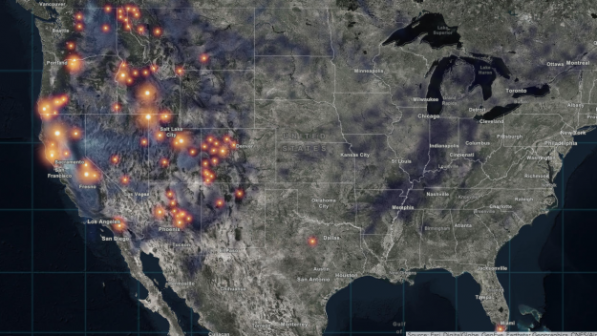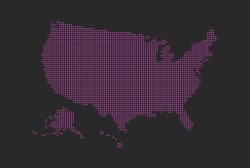Arkansas publishes map-ready image of entire state

For anyone who ever wanted to know exactly what Arkansas looks like, an aerial photograph of the state’s entire 53,179 square miles is now available online.
Arkansas Gov. Asa Hutchinson announced on Wednesday the completion of a yearlong project to create orthophotographic imagery — aerial images that have been stitched together and corrected to have uniform scale, like a map — for the state’s emergency responders and economic development teams. At a press conference in rural Madison County in the northwest of the state, Hutchinson presented a thumb drive to County Judge Frank Weaver and County Sheriff Rick Evans as a symbol of the project.
The governor said the images provide a “much-needed upgrade” to the state’s geographic information system (GIS) data.
“Our 911 emergency responders have to have absolutely accurate information on the topography, on the locations, of the addresses of where the responders have to go,” Hutchinson said.
Evans said that the imagery — which the state last collected approximately seven years ago — will help reveal how terrain, structures and infrastructure have recently changed.
“As you can see, we have a very diverse topography,” Evans said. “We have a lot of hills and areas that are sparsely populated. And being able to bring up something that will tell us where we’re going before we even get there, it’s going to be of benefit.”
The work was led by the state’s GIS office, Arkansas Geographic Information Systems (AGIS), and contracted to a Colorado-based mapping company called the Sanborn Map Company, which conducted 19 flights using twin-engine aircraft between Jan. 23 and Feb. 25. It collected 36,066 images that were condensed down to 16,000, using 180 control points to encode the data and correct for terrain distortion. The result was 125 terabytes of data that the vendor spent the following months stitching together.
AGIS Director Shelby Johnson said that in addition to public safety, the images will also help with other government functions like economic development, health and transportation.
Hutchinson said the images will help site-selection consultants understand the state’s terrain and infrastructure when deciding whether to move businesses to the state. Hutchinson’s spokesperson, J.R. Davis, told StateScoop that the state has grown in the last several years, and knowing where roads and other infrastructure are located is important.
This year’s project cost the state approximately $970,000, Johnson told StateScoop. Other project funders include the Arkansas Department of Transportation, Economic Development Commission, Department of Agriculture, and Department of Health.
While collecting aerial orthophotography is routine for some states, its high cost limits how frequently the data can be collected in others. In recent years, some states, like Washington, have increasingly turned to drones as a cheaper alternative. While cost is a limiting factor, orthophotography is more “cost effective” today than in years past, Davis said.
While semi-arid states that don’t have as many hardwood trees, like Utah and Texas, can take advantage of mapping as a service from Google, Johnson said, Arkansas’ forested areas present a challenge that required a custom solution. They got lucky this year to get the clear-sky days they needed to collect images, he said.
Ideally, fast-growth urban areas call for more frequent scans, but to balance a statewide project, new images every three to five years is a sound target, Johnson said.
The north-central area of the state was scanned at a higher resolution than the rest of the state, he added, noting the potential interest in economic development and transportation projects in that region. Ultimately, he said, the state GIS shop’s mission is all about supporting the rest of government.
“The things that grab the headlines are education and the economy and transportation and jobs,” Johnson said. “That’s not really our mission — our mission is to support all those other agencies that tackle those big problems.”






